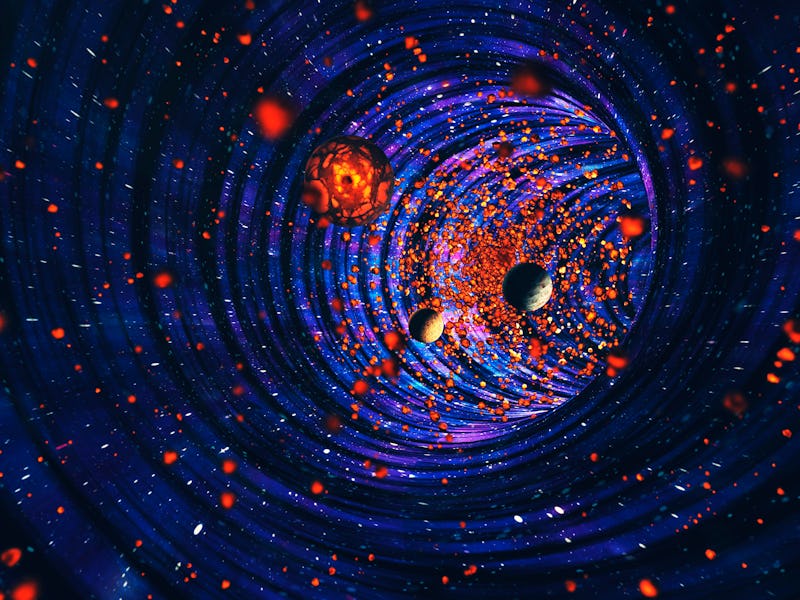Gravitational Waves Could Unlock the Answer to the Universe’s Most Elusive Mystery
Could it help us understand dark matter?

Gravitational astronomy is a relatively new discipline that has opened many doors for astronomers to understand how the huge and violent end of the scale works. It has been used to map out merging black holes and other extreme events throughout the universe. Now a team from Cal Tech’s Walter Burke Institute for Theoretical Physics thinks they have a new use for the novel technology — constraining the properties of dark matter.
As we’ve reported plenty of times before, dark matter is the stuff that makes up the supermajority of mass in the universe but is invisible to normal electromagnetic waves, making it literally impossible for us to “see” in the way we would typically think of it. However, these particles, if that is, in fact, what they are, do interact with another of the fundamental force — gravity.
Which would make them a potential target for studies of gravitational wave (GW) observatories. But there are a few assumptions underlying that work. First is that dark matter is a “macro” phenomenon — i.e., it’s not subject to the world of quantum mechanics. Gravitational waves will likely work only on what the authors called ultra-heavy dark matter, which in their context regards the mass of the articles themselves.
UT video on what exactly gravitational waves actually are.
Interferometers designed to detect gravitational ways could potentially pick up signals affected by particles that are heavy enough to fall into this category. In particular, those particles would affect three different characteristics of the gravitational wave, two of which the authors are calculating for the first time,
The first is the Doppler effect, which every high school physics student learns about, typically with an example of how ambulances sound different when they are coming towards you vs. going away from you. The same phenomenon happens with gravitational waves, as they affect space-time similarly depending on how their source is moving relative to the GW observatory.
For a more nuanced look at dark matter may affect GWs, the authors look at the Shapiro and Einstein delay. The Shapiro delay is a change in how long it takes a signal to travel from one end of an interferometer to the other. This can be changed based on whether there is compaction of space-time somewhere along the arm of the interferometer. On the other hand, the Einstein delay is an actual delay in the clock the interferometer uses to measure gravitational waves. However, this effect cancels out in specific interferometer configurations.
UT video describing how gravitational astronomy fundamentally changes how we can understand the universe.
What the authors derive from all of this is that modern GW observatories that are expected to come online shortly, such as gravity from the Quantum Entanglement of Space-Time (GQuEST) experiment at CalTech, should be able to detect transiting dark matter if it is large enough to be considered “ultra-heavy.” But there’s another nuance in the paper that is intriguing and points to a potentially more profound understanding of the underlying physics,
Physics students worldwide are taught about the fundamental forces – gravity, electromagnetism, and the strong and weak nuclear forces. But, there might be a fifth force, which has so far been invisible to our detection. This force, known as the Yukawa interaction, is a theoretical fifth fundamental force that operates between dark matter and the more traditional types of particles more familiar to classical physics students – in theoretical physics, they are known as baryons. So far, there has not been any conclusive evidence regarding the existence of this force, but some experiments have started to work on constraining it. If it does exist, these same GW detectors can play a role in helping to constrain it further, according to the paper.
Finding a new fundamental force and solving a mystery that has plagued theoretical physics for decades is a heavy burden to place on relatively new science. But that is precisely how science itself moves forward – utilizing new technologies to make further measurements and prove or disprove new theories. Now, after a long time coming, it is gravitational astronomy’s time to shine.
This article was originally published on Universe Today by Andy Tomaswick. Read the original article here.